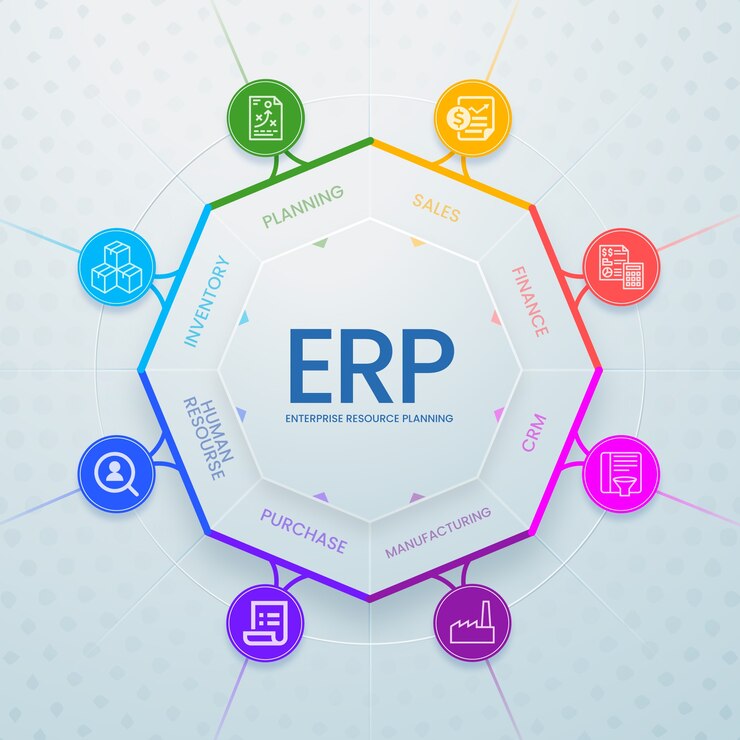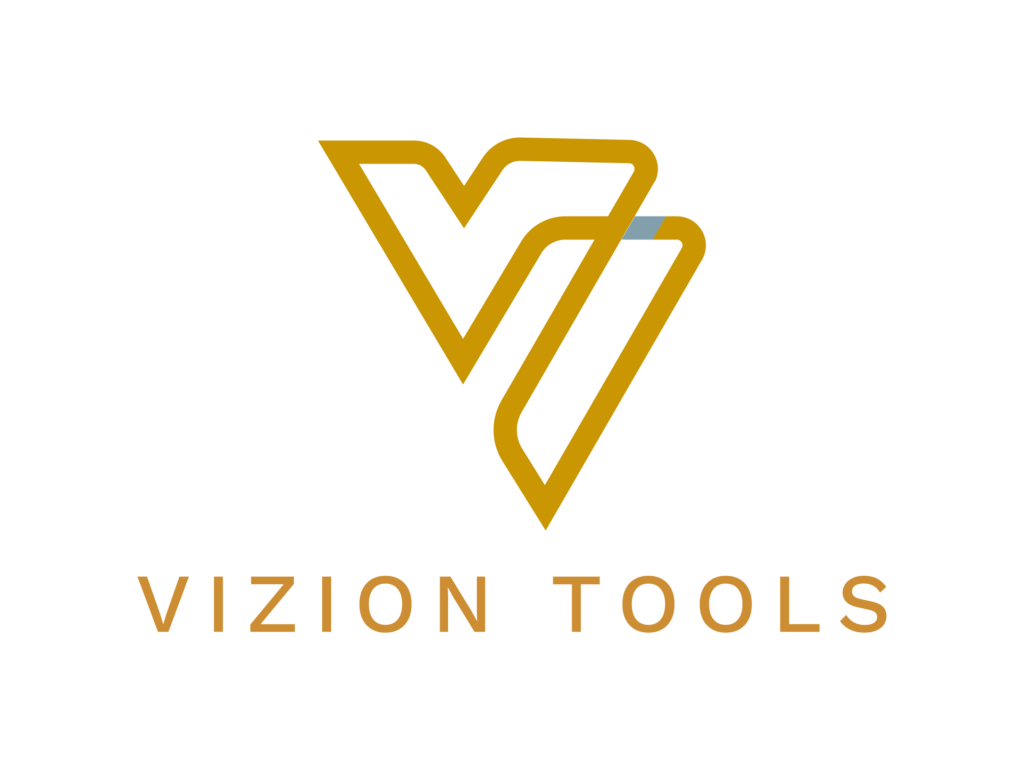What is ERP?
Introduction: Enterprise Resource Planning (ERP) is a kind of software which integrates various kinds of business process into one system. It provides a single location where data from throughout the enterprise — finance, human resources, supply chain and customer relations can be gathered maintained and tested. In other words, ERP systems are intended to make business processes more efficiently via optimizing resource planning of all functions in cooperation to each other while reducing redundancy.

Centralized Data Repository :
ERP systems collect data from all business processes into a single database, creating a common Truth to make decisions
Workflow Automation:
Reduce manual workload and human error in tedious tasks with workflow automation.
Scalability:
Since ERP systems allow scaling for varying business sizes and user roles, it is possible to include a range of users from just initiating with basic functions till when one reaches the need for an advanced module or further functionality once they scale in size.
Importance of ERP in business?
ERP Systems are critical for today’s businesses since they provide a plethora of advantages that can greatly improve overall business efficiency, including:-
More Accessibility:
An ERP allows increased efficiency of operations by automating manual tasks and streamlining the working processes, which in turn reduces the time and efforts taken to do a business.
Greater Visibility:
An advantage of ERP solutions is the real-time view on business operations that its systems offer, making it easier to track and analyze what goes with your company.
Better Collaboration — Using a centralized system of record, departments can share information quickly and collaborate more efficiently for improved outcomes.
ERP systems can be used to help identify inefficiencies, areas of waste and hence drive cost savings through better resource allocation.
Radio Compliance and Risk Management: Ensures that business transaction are done in compliance with legal requirement by using ERP systems, which enables provide them an accurate data that equipped to audit trails.
Types of ERP?
Since none of the generations would have quite a good match, we posited that they had some level of impact creating an ERP system and making them accomplish solutions for tailored commercial requirements thus from market to deal with each generation.
On-Premises ERP:
an enterprise resource planning system that is hosted on your organization’s servers and hardware. To an extent, it is more customizable and control enough but comes with obvious need of investing heavily in IT infrastructure and maintenance.
Cloud-Based ERP:
These are hosted on the vendor’s servers and accessed online. These technologies are flexible and easily scalable, while also being a good for start-ups given they require very little upfront investment.
Hybrid ERP (on-premises and cloud based):
With an approach that goes between on-promise-based and SaaS solutions, the main advantage of hybrid models is combining both benefits. It allows for flexible deployment and can be customized to a set of businesses as needed
Industry Specific ERP:
There are specific sorts of ERP systems that are made for certain industries like manufacturing, retail or healthcare. You betcha — and those systems contain industry-specific modules tailored to tackle the most common pain points within each sector.
ERP Overview
ERP system that integrates different functions of an enterprise into a single system and enable data sharing across various departments.
Universal Integration:
ERP links all the processes relevant to a business, right from procurement through production and sales up to finance, thus ensuring flow of information across channels.
Real-Time Data Availability — Decision-makers have the ability to make well-informed decisions without a delay, thanks to real-time access of data through ERP.
Modular Nature:
Enterprise resource planning systems are modular i.e., companies can buy the modules they require, and when additional ones may be needed, these can also be bought.
Modern ERP systems can be heavily customized to meet the unique processes and requirements of a business.
How to Use ERP
To make the integration of an ERP system work well, some essential measures have to be taken:
The second step called Needs Assessment, this is discussing the specific needs of your business and goals to decide out what features and modules in an ERP you will have.
Selection- Type:
Ranks an ERP system based on how well it meets the business requirements, budget and technical capabilities of a company. Also, Take into account the scalability of Both products along with Customization and Vendor Support.
Implementation — Putting an ERP system in place needs meticulous planning that includes migration of data, configuration and integration with the legacy systems. Engaging all key stakeholders and training are important steps to make the change simpler.
Employee Training:
Make sure all employees know their way around the ERP
effectively. This training can include the features of a system, how to move through it and any custom methodologies layered on top
Continuous Optimization:
Regularly monitor and optimize ERP system to ensure the solution is still in line with business objectives, as well as preventing obsolescence. To keep the system functioning properly and utilize new features, installing regular updates as well as routine maintenance is required.
ERP Basics
Everyone who will be using or deploying this powerful business tool needs a basic grasp of ERP.
Central Database:
The main backbone of an ERP system is a central database in which data from all the different business processes are stored. The centralization of the system enables similar data to be used consistently and correctly.
Unified Modules:
The ERP systems include multiple modules that are integrated into their system and help in serving a particular business function (e.g., finance, HR or the supply chain). A sum total of integration for this solution with these modules.
Processing in real-time:
an ERP system processes data as it intersects ensuring that all information is current and therefore easily reportable on.
Role-based Access Control:
ERP systems take care of user roles to provide the authorized information and tools required for work without a security breach.
ERP Modules
Common Modules of an ERPAn ERP system is composed of many modules, each having distinct functions and are responsible for taking care different areas.
Financial Management:
The one stop shop for all your accounting, budgeting, financial reportings and cash flow management. Offers a full picture of company health from financial perspective
Personnel — this module manages all employee data including payroll, benefits, hiring and performance management.
Supply Chain Management (SCM):
The SCM module takes care of the procurement, inventory management and order processing with a right logistics planning ensuring that goods move to appropriate place at optimal cost.
CRM tracks customer interactions, sales opportunity and marketing campaigns, which improves business relation with customers.
Manufacturing:
It automates production planning, scheduling, quality control and maintenance of manufacturing processes to make them run efficiently.
Sales and Marketing: Order processing, Forecasting Sales orders, campaign module for marketing
How is financial management differ from ERP
ERP System is for financial management, but ERP system and finance both are different.
Focus:
While financial management considers accounts, budgeting and fiscal reporting etc. only from the finance point of view. However, ERP covers a wider range of business processes from finance to HR to supply chain and customer relations.
Integration – ERP systems unite financial management into additional business operations, offering an all-in-one program to manage different elements of a company. This integration also facilitates improved financial reporting and stronger decision-making capabilities.
Data Accessibility:
Financial information can also be shared among various departments within an ERP system which provides a centralized view of the business’s „numbers“ to all parts of organization. By contrast, standalone financial management systems may restrict access to financial data for specific users or departments
ERP System Helps in Improved Business Functions
Enterprise resource planning systems are designed with the goal of improving many functions in a business, such as
Finance:
Automate finishing processes, increase reporting and measurement precision, gain insight into how the business is performing financially
Human Resources:
Assign and manage employees more efficiently, payroll processing is automated, performance metrics can be tracked better.
Supply Chain:
Optimize procurement, inventory management and logistics processes to cut costs but boost efficiency.
Sales → Service:
Integrate sales forecasting, customer interactions and further advance the overall service you are providing to customers.
Manufacturing:
Production planning automation, Quality control optimization, and Downtime reduction with enhance maintenance management.
Signs You Need an ERP System
Realization of When Your Business Really Needs To Implement an ERP Solution:
Overhead Processes:
If you struggle with inefficient, broken processes — which typically involve manual processing or the management of data across multiple spreadsheets and databases — an ERP system can streamline your operations to deliver efficiency.
Data Silos :
Departments using separate systems that are not integrated with each other. An ERP system connects these systems, meaning all the data is consistent across the organisation.
Poor Decisions Being Made:
If you suffer from slow decisions which are made without real time data or worse still inaccurate reporting, an ERP system will more than likely provide better decision making information.
Scalability:
Your business can run out of its existing systems the more your business grows. ERP systems are designed to grow with your business and can handle more data and users over time.
Regulatory compliance:
If your business has issues meeting regulatory standards then an ERP system can manage everything more efficiently mit ermöglicht es gen fron data and processes to remain on track with set lawanylänge it is the perfect solution for this problem.
What is Odoo
Odoo is a flexible and easy-to-implement integrated open source ERP platform with an extensive suite of business applications that are very useful for processes in various fields:
Flexible Design:
Odoo is built in a modular style allowing you to begin with just the apps you need and use more as requirements change. Which makes this a better fit for companies all sizes.
Odoo is open-source:
Odoo can easily be adapted to an organization’s specific requirements. This provides a bit more control over the system and the ability to build new functionalities.
Versatility — Odoo provides a customer relationship management (CRM), accounting, manufacturing, procurement and fulfillment workflow much like ERPs by integrating several customizable apps for different business functions. If some businesses going to integrate their operations using that then, it works as one stop solution.
Easy to use UI — Odoo has a simple understandable interface for users, which in turn reduces the adoption time of the employees towards a new system.
How Odoo helps in resource Optimization
With Odoo ERP, companies can benefit from robust resources:
Smart Planning: Businesses by using Odoo, can plan themselves
